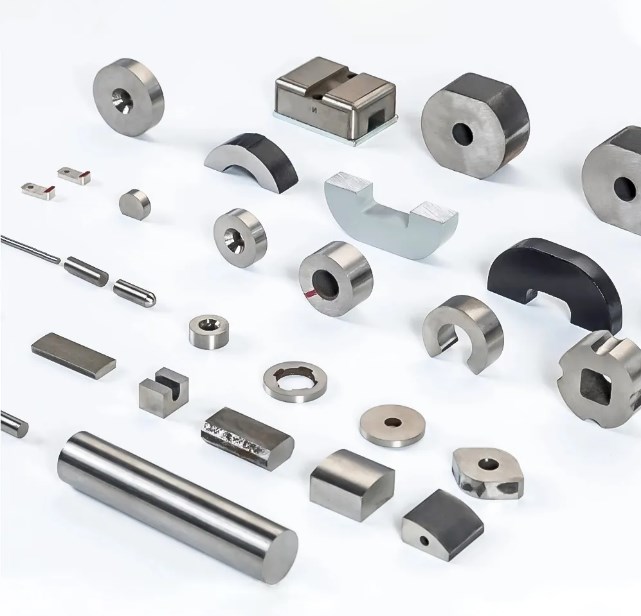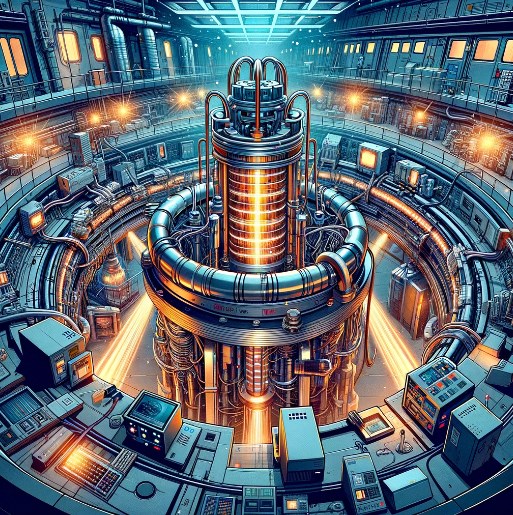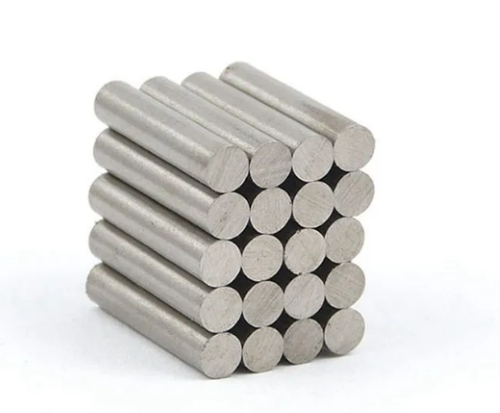Alnico Magnets: From Electric Guitars to Particle Accelerators
Last updated on {{lastDate}}
In the vast universe of magnetism,
Alnico magnets stand out for their remarkable properties and versatile applications. Comprised of aluminum (Al), nickel (Ni), cobalt (Co), and often including iron and other metals, Alnico magnets were developed in the 1930s and have since been integral to a myriad of technological advancements. Their unique characteristics, such as high magnetic strength and impressive thermal stability, make them indispensable in various fields, ranging from the musical strains of electric guitars to the high-tech realms of particle accelerators.

Alnico magnets are known for their high residual induction (Br), which allows them to produce strong magnetic fields in certain configurations. This feature, combined with their ability to retain magnetism (magnetic remanence) at elevated temperatures, sets them apart from many other magnetic materials. They can operate at temperatures up to 540°C, making them ideal for use in environments where other magnets would demagnetize and fail.
Despite the advent of
rare earth magnets, which offer higher magnetic strength, Alnico remains preferred in specific applications due to its reliability, temperature stability, and resistance to corrosion without the need for protective coatings.
Striking a Chord: Alnico in Electric Guitars
One of the most culturally significant applications of Alnico magnets is in the pickups of electric guitars. These pickups convert the vibration of the guitar strings into electrical signals, which can then be amplified and shaped into the rich, electrifying sounds that define much of modern music. The type of magnet used in a pickup significantly influences the tone and character of the sound produced. Alnico magnets, favored for their warm, clear tones, contribute to the distinctive sound profiles sought after by musicians and audio engineers. Different grades of Alnico (ranging from Alnico II to Alnico V) offer a spectrum of tonal qualities, allowing for a high degree of customization.

Navigating the Skies: Alnico in Aerospace
Alnico's resistance to demagnetization and thermal stability also makes it valuable in aerospace applications. From magnetic sensors and actuators to essential components in the electrical systems of aircraft, Alnico magnets contribute to the safety, reliability, and efficiency of modern aviation. Their performance at high altitudes and temperatures ensures that critical systems function correctly, even under the demanding conditions encountered in aerospace environments.

Accelerating Science: Alnico in Particle Accelerators
In the cutting-edge world of particle physics, Alnico magnets play a crucial role in steering and focusing beams of charged particles within accelerators. These facilities, such as the Large Hadron Collider (LHC), investigate the fundamental components of matter and the forces that govern their interactions. Alnico magnets are used in beam transport systems and other accelerator components, where their magnetic fields guide particles through the vacuum tubes at nearly the speed of light, allowing scientists to conduct high-energy physics experiments.

Beyond Guitars and Accelerators: Other Applications
The utility of Alnico magnets extends into many other areas, including:
- Electric motors and generators, where contribute to the conversion of electrical energy into mechanical energy, and vice versa.
- Sensors and measuring instruments, where their stability and precision support a range of industrial and scientific measurement tasks.
- Educational tools, as their visible magnetic lines of force offer a tangible way to demonstrate magnetic principles in classrooms.
What kind of magnets are used in particle accelerators?
Particle accelerators, sophisticated machines that accelerate charged particles to high speeds for various scientific research purposes, including high-energy physics experiments, utilize a variety of magnets to control and manipulate particle beams. The types of magnets used in particle accelerators are crucial for steering, focusing, and maintaining the path of these beams as they travel at near-light speeds. Here are the primary kinds of magnets employed in particle accelerators:
Dipole Magnets
- Function: Dipole magnets are used to bend the path of charged particles, steering them along the curved sections of the accelerator or into circular paths in synchrotrons and storage rings. They create a uniform magnetic field perpendicular to the motion of the particles, causing them to follow a curved trajectory according to the Lorentz force principle.
- Application: Essential for directing beams around corners and keeping particles confined to a circular path in ring accelerators.
Quadrupole Magnets
- Function: Quadrupole magnets are used for focusing the particle beam. They produce a magnetic field that varies linearly across the beam cross-section, with the field strength increasing from the center towards the outside. This gradient in the magnetic field serves to focus the beam in one plane while defocusing it in the perpendicular plane. By arranging quadrupole magnets in alternating focusing and defocusing configurations (a technique known as strong focusing), the overall beam can be kept tightly focused.
- Application: Vital for maintaining beam quality and reducing beam divergence.
Sextupole and Higher Order Multipole Magnets
- Function: Sextupole, octupole, and other higher-order multipole magnets are used to correct aberrations in the beam optics and to fine-tune the beam dynamics. They provide higher-order corrections to the magnetic field that help control the distribution and shape of the particle beam, improving stability and uniformity.
- Application: Employed for beam correction and stabilization, especially in high-precision or high-intensity accelerators.
Superconducting Magnets
- Function: Superconducting magnets, often made from niobium-titanium (NbTi) or niobium-tin (Nb3Sn) compounds, can generate extremely high magnetic fields while consuming less power than conventional electromagnets. They are cooled to cryogenic temperatures to achieve superconductivity, drastically reducing electrical resistance and allowing for high current densities.
- Application: Crucial for high-energy accelerators like the Large Hadron Collider (LHC), where strong magnetic fields are needed to bend and focus the beams of protons or heavy ions at very high energies.
- Function: Both electromagnets and permanent magnets are used in various roles within accelerators, depending on the specific needs of the accelerator design, including the required magnetic field strength, stability, and adjustability.
- Application: Electromagnets offer the advantage of adjustable magnetic fields, useful for tuning the accelerator's performance, while permanent magnets provide stable fields with no power consumption, useful in smaller or more specialized applications.
Are alnico magnets better than neodymium?
Whether Alnico magnets are "better" than Neodymium magnets depends on the specific application and performance criteria in question. Both Alnico and Neodymium magnets have distinct properties that make them suitable for different uses. Here's a comparison based on various factors:
Magnetic Strength
- Neodymium: Neodymium magnets, made from an alloy of neodymium, iron, and boron (NdFeB), are the strongest type of permanent magnets available. They can support thousands of times their own weight and generate significant magnetic fields in a compact size.
- Alnico: Alnico magnets, composed of aluminum, nickel, and cobalt, have a lower magnetic strength compared to Neodymium magnets. They cannot support as much weight or generate as strong a magnetic field as Neodymium magnets of the same size.
Temperature Stability
- Neodymium: While incredibly strong, Neodymium magnets can lose some of their magnetic strength when heated beyond their maximum operating temperature (which can vary but is generally around 80°C to 220°C, depending on the grade). Special high-temperature grades are available but at a higher cost.
- Alnico: Alnico magnets excel in temperature stability. They can retain their magnetism in temperatures up to 540°C, making them ideal for applications involving high heat.
Resistance to Demagnetization
- Neodymium: Neodymium magnets have a high resistance to demagnetization, but they can be more vulnerable to demagnetization at high temperatures.
- Alnico: Alnico magnets have a lower resistance to demagnetization compared to Neodymium magnets. They can be easily demagnetized and re-magnetized, which can be an advantage or disadvantage depending on the application.
Corrosion Resistance
- Neodymium: These magnets are prone to corrosion if exposed to moisture or certain chemicals, requiring protective surface treatments or coatings for many applications.
- Alnico: Alnico magnets offer excellent corrosion resistance and generally do not need additional protective coatings, even in humid or corrosive environments.
Cost
- Neodymium: The cost of Neodymium magnets is generally higher than Alnico magnets due to the rare earth elements they contain. However, prices can fluctuate based on market demand for rare earth materials.
- Alnico: Alnico magnets are typically less expensive than Neodymium magnets but offer lower magnetic strength. Their cost-effectiveness depends on the application's specific requirements for magnetic strength and other factors.
Applications
- Neodymium: Due to their high strength, Neodymium magnets are used in applications requiring compact and powerful magnets, such as in hard disk drives, electric motors, and magnetic resonance imaging (MRI).
- Alnico: Alnico magnets are preferred in applications where high-temperature stability is crucial, such as in certain automotive and sensor applications, and electric guitar pickups due to their unique tonal characteristics.
Looking Forward
Despite the competition from newer materials, the demand for Alnico magnets persists, driven by their unique combination of thermal stability, magnetic characteristics, and durability. Ongoing research aims to enhance their properties and develop more cost-effective manufacturing techniques, ensuring that Alnico magnets will continue to be a key player in technological innovations.
From the strings of a guitar to the vastness of space, and the depths of subatomic particles, Alnico magnets contribute silently but significantly to our exploration and understanding of the world. Their journey from the early 20th century to the present day is a testament to the enduring importance of materials science in advancing technology and enriching our lives.
About the author
Cathy Marchio
Cathy Marchio is an expert at Stanford Magnets, where she shares her deep knowledge of magnets like Neodymium and Samarium Cobalt. With a background in materials science, Cathy writes articles and guides that make complex topics easier to understand. She helps people learn about magnets and their uses in different industries, making her a key part of the company's success.
Reviews
{{viewsNumber}}
Thought On
"{{blogTitle}}"
LEVE A REPLY
(Cancle reply)
Your email address will not be published. Required fields are marked
*
{{item.children[0].name}}
{{item.children[0].created_at}}
{{item.children[0].content}}
More Replies
LEAVE A REPLY
Your email address will not be published. Required fields are
marked*



















